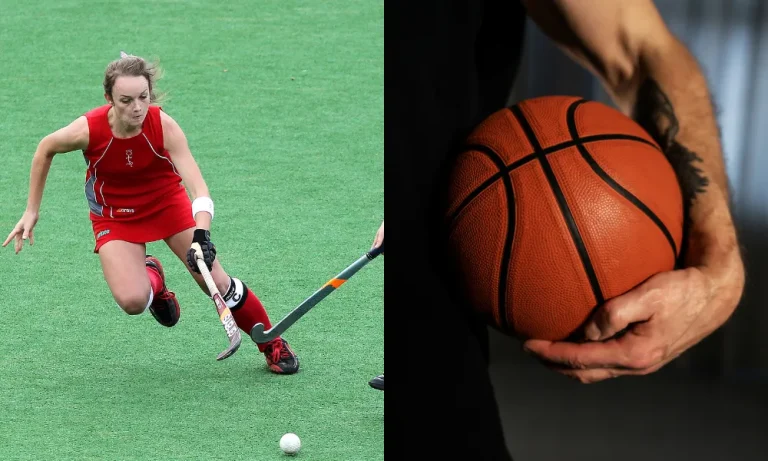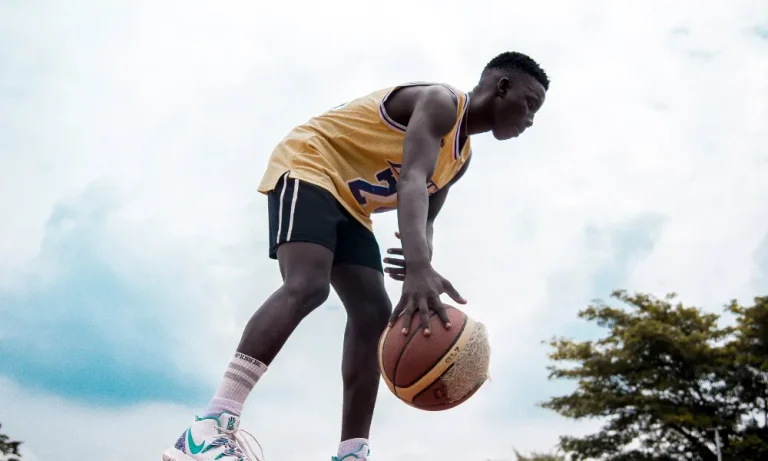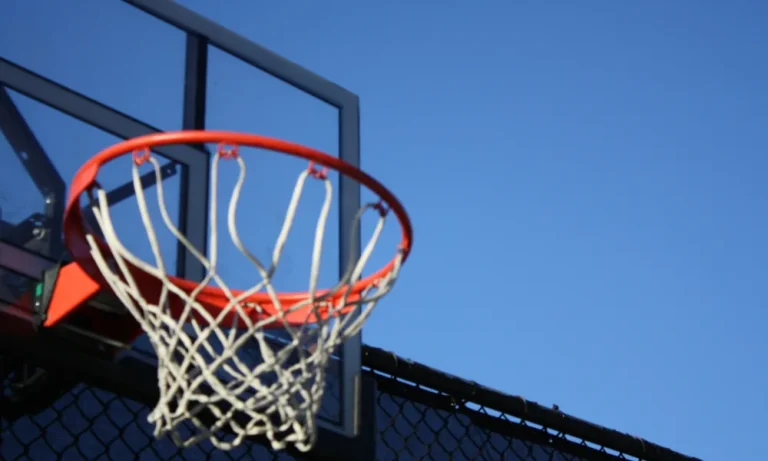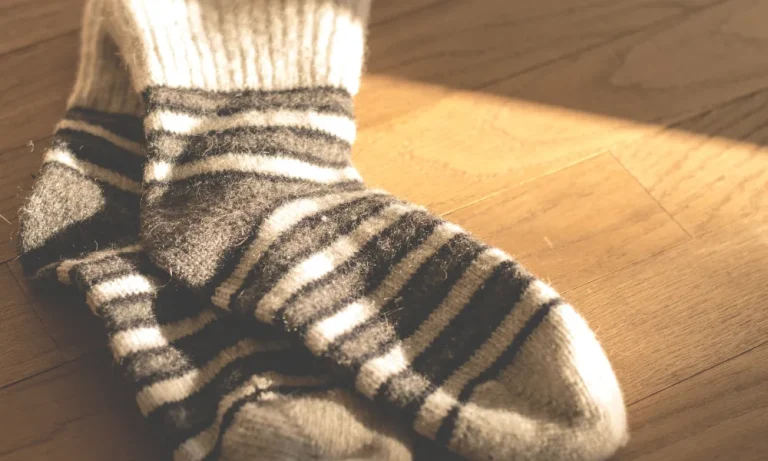How Should Basketball Shoes Fit?
Are you ready to level up your basketball game? It all starts with the perfect fit! When it comes to basketball shoes, finding the right size and fit is crucial for your performance on the court. In this guide, we’ll dive into the ins and outs of how basketball shoes should fit, helping you unlock your full potential and dominate the game.
Understanding Foot Anatomy
Your foot anatomy plays a crucial role in determining how basketball shoes should fit. Each person’s foot is unique, and understanding your own foot structure can help you find the right shoe that provides optimal support and comfort.
Different Foot Arch Types and Shoe Selection
Foot arches come in various forms: high arches, low arches (flat feet), and neutral arches. The type of arch you have can influence the type of shoe you should choose.
- High Arches: If you have high arches, you’ll benefit from shoes with ample cushioning and arch support to help distribute weight evenly and absorb shock.
- Low Arches (Flat Feet): Those with low arches require shoes with good stability features and motion control to prevent overpronation and provide proper support.
- Neutral Arches: If you have neutral arches, you’ll have more flexibility in shoe selection, but it’s still important to consider factors like cushioning and support.
Alleviating Common Foot Problems with Proper Fitting Shoes
Properly fitting basketball shoes can help alleviate common foot problems such as plantar fasciitis, bunions, and blisters. When shoes fit correctly, they provide the necessary support, cushioning, and stability to reduce the risk of these issues, allowing you to focus on your game without discomfort or pain.
Determining the Right Shoe Size
To measure your foot size accurately, follow these simple steps:
- Place a piece of paper on the floor and stand on it with your heel against a wall.
- Mark the longest point of your foot on the paper (usually the tip of the big toe).
- Measure the distance from the wall to the mark in centimeters or inches.
- Repeat the process for the other foot, as foot sizes may vary.
The Significance of Length and Width Measurements
When it comes to shoe fit, both length and width measurements are important. Length determines the amount of space your foot has inside the shoe, while width ensures that the shoe properly accommodates the width of your foot.
Tips for Determining the Right Shoe Size
Apart from accurate measurements, consider the following tips when determining the right shoe size:
- Allow some room for your toes to move comfortably without being cramped.
- Consider the type of socks you’ll wear during play and account for any extra thickness.
- Take into account your individual preferences, such as a snug or roomier fit.
- Consider your playing style – if you make quick cuts and need more stability, a slightly tighter fit might be preferable.
Key Factors for Basketball Shoe Fit
When it comes to basketball, having the right shoe fit can make all the difference in your performance on the court. There are several key factors to consider when selecting basketball shoes that provide optimal support, comfort, and stability.
Proper Heel Fit and Support
A proper heel fit is crucial to prevent your foot from sliding inside the shoe during quick movements. Look for shoes with a secure heel counter that hugs your heel and provides stability. This prevents any unwanted friction or blisters and ensures a comfortable fit throughout the game.
Toe Box Room and Flexibility
Having enough room in the toe box is essential for natural movement and preventing discomfort. Your toes should have some wiggle room without feeling cramped. Additionally, the toe box should be flexible to allow for proper toe-off during jumps and quick direction changes.
Midfoot and Arch Support for Stability and Balance
Basketball shoes with adequate midfoot and arch support help maintain stability and balance. They prevent excessive foot rolling, especially during lateral movements, reducing the risk of ankle sprains. Look for shoes with a supportive midsole and arch design that caters to your specific arch type.
Impact of Shoe Weight and Ankle Support on Performance
The weight of the shoe can affect your speed and agility on the court. Lighter shoes often provide better responsiveness and maneuverability, while heavier shoes may offer more durability and support. Additionally, ankle support is crucial for preventing injuries, especially for players with a history of ankle issues. High-top shoes provide added ankle support, while low-top shoes offer more freedom of movement.
Trying On Basketball Shoes
When shopping for basketball shoes, it’s crucial to try them on properly to ensure the best fit and performance. Here’s a step-by-step guide on how to try on basketball shoes and make an informed decision.
Step-by-Step Guide for Trying On Basketball Shoes
- Start by loosening the laces and opening the tongue of the shoe to create a wider opening for your foot.
- Put on a pair of sports-specific socks that you typically wear during basketball games. This ensures a more accurate fit, as different socks can affect the feel of the shoe.
- Slide your foot into the shoe and lace it up snugly, starting from the bottom and working your way up. Make sure the laces are evenly tightened to avoid any pressure points.
- Stand up and walk around in the shoes. Pay attention to how they feel on your feet. They should provide ample cushioning, support, and stability.
- Bend your knees and simulate basketball movements such as jumping, pivoting, and side-to-side shuffling. This will give you a better sense of how the shoes perform during gameplay.
- If possible, test the shoes on a basketball court or a similar surface. This allows you to feel the traction and grip of the shoes, which are essential for quick cuts and changes in direction.
Importance of Sports-Specific Socks
Trying on basketball shoes with sports-specific socks is crucial because different socks can affect the fit and feel of the shoe. Basketball socks are often thicker and provide additional cushioning and moisture-wicking properties. By wearing the socks you typically play in, you can ensure a more accurate assessment of the shoe’s fit and comfort.
Significance of Testing on a Basketball Court
Testing basketball shoes on a basketball court or a similar surface is important because it allows you to experience the shoe’s performance in a realistic environment. The court surface affects traction, grip, and stability, which are essential for basketball movements. By testing the shoes on the same surface you’ll be playing on, you can make a more informed decision about their suitability for your game.
Signs of an Ill-Fitting Shoe
Wearing ill-fitting basketball shoes can not only be uncomfortable but also have negative consequences on your performance and overall foot health. It’s important to recognize the signs of an ill-fitting shoe and take steps to address the fit issues.
Common Signs of an Ill-Fitting Shoe
- Blisters and Hot Spots: If you notice frequent blisters or hot spots on your feet after playing basketball, it’s a sign that the shoes are causing friction due to poor fit.
- Toe Pressure: If your toes feel cramped or squeezed together, it indicates inadequate toe box room.
- Heel Slippage: Excessive movement or slippage of the heel inside the shoe suggests a loose fit and lack of proper support.
- Arch Discomfort: If you experience pain or discomfort in your arches while wearing the shoes, it may indicate insufficient arch support.
- Pain or Discomfort: Any pain, discomfort, or pressure points in the feet while wearing the shoes can be a sign of an improper fit.
Potential Consequences of Wearing Ill-Fitting Shoes
- Decreased Performance: Ill-fitting shoes can hinder your performance on the court, affecting your agility, speed, and overall comfort.
- Increased Risk of Injuries: Shoes that don’t fit properly can lead to blisters, calluses, bunions, and even more serious injuries like sprained ankles or stress fractures.
- Foot Discomfort and Fatigue: Wearing shoes that don’t fit well can cause foot pain, fatigue, and discomfort, making it harder to focus on the game.
Identifying and Addressing Fit Issues
To identify fit issues, pay attention to any signs of discomfort or pain while wearing the shoes. Take note of areas where you feel pressure, rubbing, or slippage. If you notice any fit problems, consider trying a different size, width, or style of shoe that better suits your feet.
When trying on shoes, make sure to walk, jump, and perform basketball movements to assess how they feel. It’s also helpful to consult with a knowledgeable salesperson or a podiatrist for guidance on finding the right fit.
Tips for Finding the Perfect Fit
Finding the perfect fit when choosing basketball shoes is essential for comfort, performance, and injury prevention. Here are some helpful tips to ensure you find the right pair that meets your unique needs and preferences.
Trying on Different Brands and Models
It’s important to try on basketball shoes from various brands and models. Each brand may have different sizing, fit, and features. By exploring different options, you can find the brand or model that suits your feet best. Don’t be afraid to step out of your comfort zone and try something new.
Considering Personal Preferences and Playing Style
Consider your personal preferences and playing style when selecting basketball shoes. Are you looking for lightweight shoes for speed and agility, or do you prefer more cushioning and support for added comfort? Understanding your playing style and preferences can help narrow down your options and find the perfect fit.
Tips for Foot Shape and Size
- Wide Feet: If you have wide feet, look for shoes with a wider toe box to accommodate your foot shape. Brands that offer wide sizing options can be a good choice.
- Narrow Feet: For narrow feet, consider shoes with a snug, secure fit to prevent excessive movement. Look for brands that offer narrower sizing options or adjustable lacing systems.
- High Arches: If you have high arches, look for shoes with ample arch support to provide stability and prevent discomfort. Cushioned midsoles can also offer additional support and shock absorption.
- Flat Feet: If you have flat feet, seek shoes with good arch support and stability features. Look for shoes with motion control or stability technology to help correct pronation.
Remember to measure your feet regularly, as foot size can change over time. Try on both shoes, walk around, and perform basketball movements to ensure a proper fit. If you’re unsure, seek advice from a knowledgeable salesperson or a podiatrist to guide you in finding the perfect fit.
Caring for Basketball Shoes
Taking proper care of your basketball shoes is crucial for maintaining their fit, performance, and durability. By following some simple care tips, you can ensure that your shoes stay in good condition and continue to provide the support and comfort you need on the court.
Maintaining the Fit of Basketball Shoes
To maintain the fit of your basketball shoes over time, it’s important to:
- Avoid Excessive Wear: While basketball shoes are designed for intense use, wearing them for activities other than basketball can cause unnecessary wear and tear. Reserve them solely for basketball to preserve their fit.
- Replace Insoles: Over time, the insoles of your basketball shoes may lose their cushioning and support. Consider replacing them periodically to maintain optimal comfort and fit.
- Tighten Laces Properly: Before playing, ensure that you lace up your shoes properly. This will provide a secure fit and prevent unnecessary movement inside the shoes.
Proper Cleaning and Storage Techniques
To keep your basketball shoes clean and in good condition, follow these cleaning and storage tips:
- Regular Cleaning: After each use, wipe off any dirt or debris from the shoes using a soft cloth or brush. For stubborn stains, use a mild soap and water solution. Avoid immersing the shoes in water.
- Air Drying: Allow your basketball shoes to air dry naturally after cleaning. Avoid using direct heat sources, such as heaters or dryers, as they can damage the materials.
- Proper Storage: When not in use, store your basketball shoes in a cool, dry place. Avoid keeping them in extreme temperatures or humid environments, as this can lead to deterioration.
Average Lifespan and Replacement
The average lifespan of basketball shoes can vary depending on factors like usage frequency and intensity. On average, basketball shoes can last anywhere from three to six months for regular players. However, if you notice significant wear and tear, loss of support, or decreased cushioning, it’s time to consider replacing them.
Remember that each person’s experience may differ, so pay attention to how your shoes feel and perform. When they no longer provide the necessary support and comfort, it’s best to invest in a new pair to maintain optimal performance on the court.
FAQs
How should basketball shoes fit?
Basketball shoes should fit snugly, with a secure heel and midfoot lockdown. There should be enough room in the toe box for your toes to move comfortably, but not too much extra space.
How can I determine the right size for basketball shoes?
It’s recommended to measure your feet using a sizing chart and try on different sizes in-store. Remember to consider your foot width and shape, as well as the specific brand and model’s sizing guidelines.
What should I consider when trying on basketball shoes?
When trying on basketball shoes, make sure to wear the socks you would typically wear during play. Walk around, jump, and simulate basketball movements to assess the fit, comfort, and support provided by the shoes.
Is it normal to feel some initial tightness in basketball shoes?
Yes, some tightness is normal initially as the shoes need time to break in and conform to your feet. However, if the tightness persists or causes discomfort, it may indicate a wrong size or improper fit.
How do I know if basketball shoes are too big or too small?
If basketball shoes are too big, your feet may slide around inside, causing instability. On the other hand, if they are too small, you may experience discomfort, pinching, or pain. Ensuring a proper fit is crucial for optimal performance and injury prevention.
Conclusion
Finding the right fit for your basketball shoes is crucial for your comfort, performance, and overall enjoyment on the court. Remember to try on different brands and models, consider your personal preferences and playing style, and pay attention to your foot shape and size. By following these tips, you’ll be well on your way to finding the perfect fit and taking your game to the next level.





